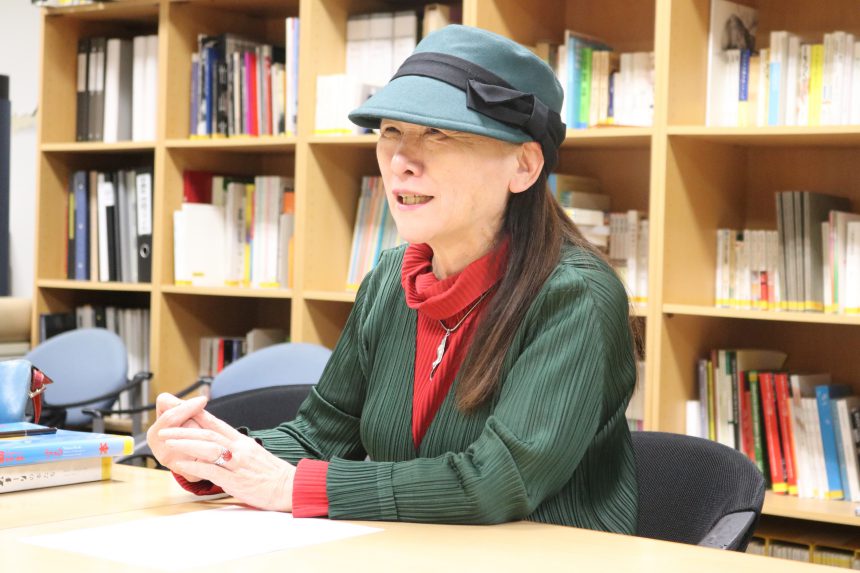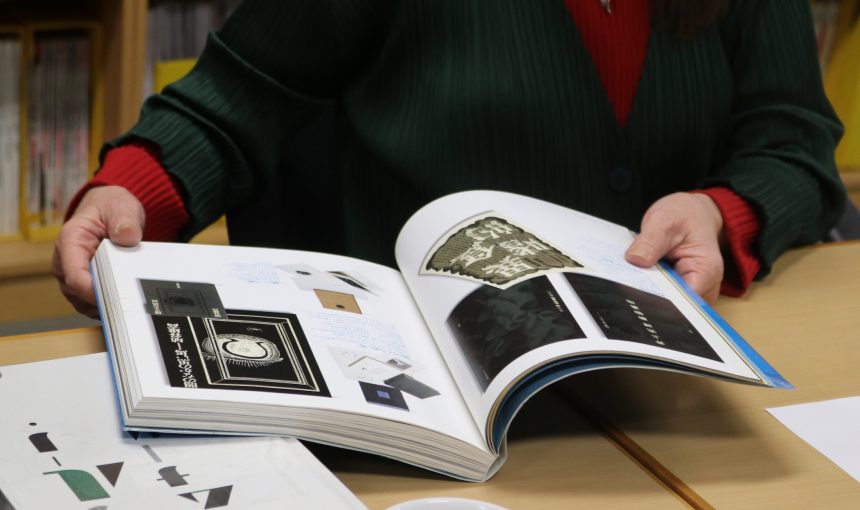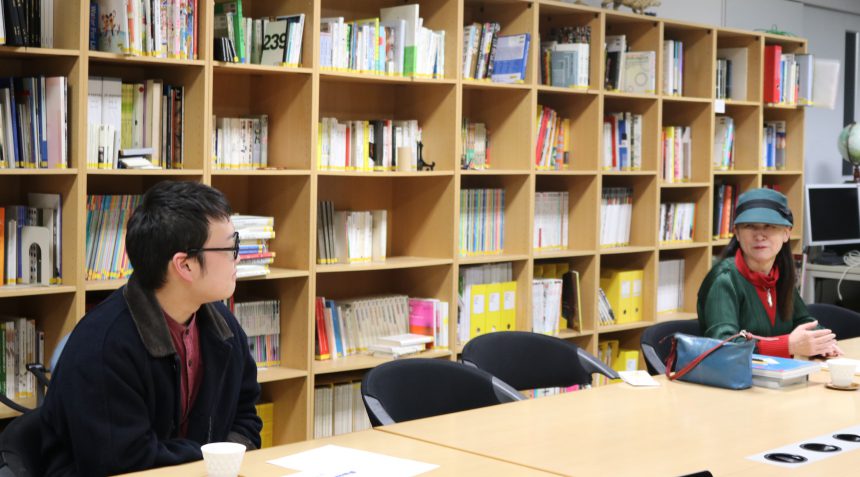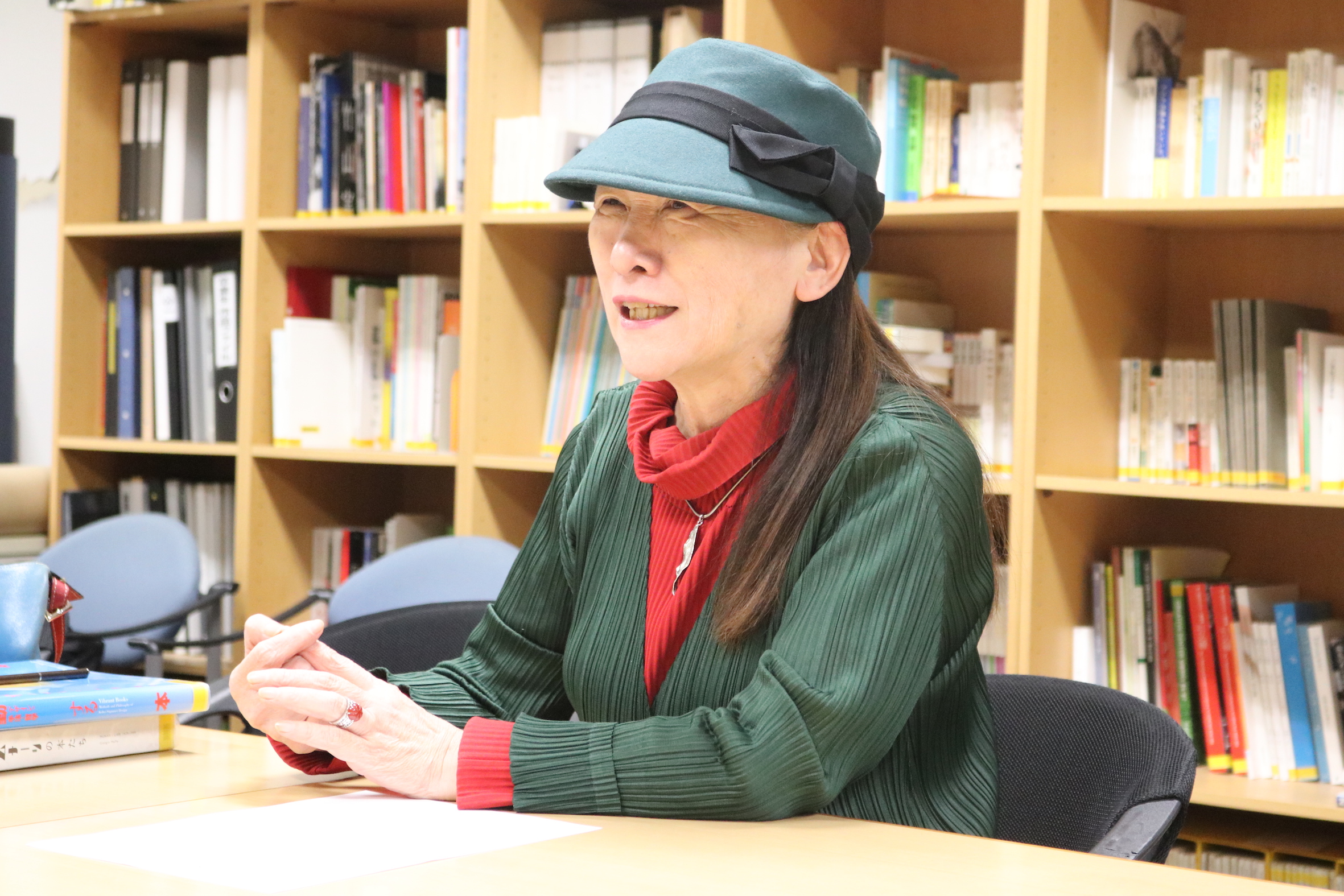
Musashino Art University
Department of Design and Information
Professor Akiko Moriyama
Q. What kind of classes do you teach?
There are many basic exercises and practical courses on print media editing.
I teach courses at both the undergraduate and graduate levels on subjects such as the history of Japanese design, Japanese design culture theory, and the philosophy of design, which are rarely offered in the design field in Japan.
Q. The moment when the font's sensitivity was turned on
I have never aspired to be a graphic designer. I have loved books since I was a child, and even as a student I would often pick up a book rather than a magazine. However, in the year I graduated from university, a magazine called "Episteme" was launched, designed by Kohei Sugiura. Among Sugiura's magazine designs,WorkshopIt will go down in history alongside the magazine "Yu," and when I picked up "Episteme," I was struck by what a world of magazines it was.
Typography has two meanings: "fonts" and the broader "art of book design." In that sense, it doesn't necessarily have to be a design-related theme.
For me, fonts are part of typography as a book-making technique, so it's not a matter of "which typeface." I later realized that the books I loved to look at on my bookshelf from my teens until I graduated from university were actually designed by Mr. Sugiura, and that's when I became aware of the appeal of typefaces in books and magazines.
After that, I became a magazine editor and read Ikko Tanaka's "Mitsucho". At the time, Ikko Tanaka was also available for an interview. It wasn't a graphic designer trying to create a typeface, but through his long experience, it became a font. I was impressed by that.

The lineup of designers I commissioned for my edited book could be said to reflect my "font thinking, editorial thinking." They are all people who are adventurous with typefaces or have a deep knowledge of typefaces when it comes to typography as a book-making technique. I feel that good graphic design cannot be achieved unless typography is taken into consideration.
It's the same for students. They need the three elements of title, text, and typography. Right now, my role in my graduation research is to say, "Doesn't this title not express at all what you're thinking or what you've created?" If you can't decide on a title, that means your concept is unstable. Once the title is decided, the design and typeface should be decided at the same time.
An editorial designer is half editor. Editing and design, at least when it comes to media that involves language, mostly overlap, but there are also some areas where they don't overlap. That's why editors and designers are similar. However, I feel that video and the like are a bit different.
Q. What do you think of the students at this school?
There are very few editors in the world who are knowledgeable about editorial design, and there are actually very few designers who have a deep understanding of writing. To put it bluntly, I thought that this was preventing the country's publishing culture from improving.
I'm not originally a designer, but a writer and editor. Many of the students who enter the Department of Design and Information Studies have passed the entrance exam for design and creative expression, but if we can equip these design-savvy students with writing skills, they will be able to produce highly-quality edited works. After that experience, they can become editors or designers. That's what I wanted to do, and that's why I came to this university.
Many students say, "I'm not good at writing," but with a little practice, it often turns out that it's not that bad. The first thing I do in class is Japanese dictation, where students write down what they hear verbatim. They have a hard time at first, saying, "I understand, but the words just won't come out of my fingers," but after about three tries, they'll say, "Ah, it's starting to come out." Not everyone believes it, but there are a certain percentage of students who are also good at text writing. People who can control shapes generally have high abstract ability, and language is an abstract ability to begin with, so I have a hypothesis that "people who are good at creating shapes might also be good at language with a little practice."
Even with assignments, if the form is complete, the content is almost fine. Because when you're writing the text, you have an idea in your head of what form it should take. If the content is sloppy, no matter how well you design it, it won't be much.
I'm not a designer myself, so I enjoy design classes. This department is like that, and there are also non-designer specialists, such as IT (information technology) and marketing specialists. What I tell my students is that they should leave with at least two skills. If they just say, "I can only do this," I think they'll be in real trouble when the situation worsens. For example, if you can program and do editorial work, you'll be able to adapt no matter how much the media changes. In this way, if your abilities and thinking are aligned, I believe those abilities will be able to help each other out and adapt when society undergoes major changes.
Q. The moment the switch turns "OFF"
I don't think there's an ON/OFF in this kind of job. I guess it's OFF when I'm sleeping.
When I want to find peace of mind, I read historical novels. The characters in historical novels are elegant and the landscapes are beautifully described. I feel like they are cultural novels.
Q: What would you like to challenge yourself with in the future? What are you interested in?
There are two now.
One of my interests is how "language" can become a "voice." It's hard to really get a sense of how your books are being read by readers, but when you write a script as an experiment, the actors instantly memorize it and speak it out loud. I think that's amazing. That's why I've been interested in language that can become a performance, and I've been working on that recently.
Second, if I say this, I have to do it, so what should I do? (laughs)
It seems that the first Japanese art history was published in French following the 1900 Paris World's Fair. However, Japan still lacks a comprehensive history of design. It's a problem that there is no comprehensive history that can help us share a common understanding of design. The Color History of Japanese Design, which I co-edited and co-authored, was inspired by this issue, but it was only an introductory book. However, the hurdles are very high, and I'm aware that I'm not up to the task.

*This article is based on information from 2018.

